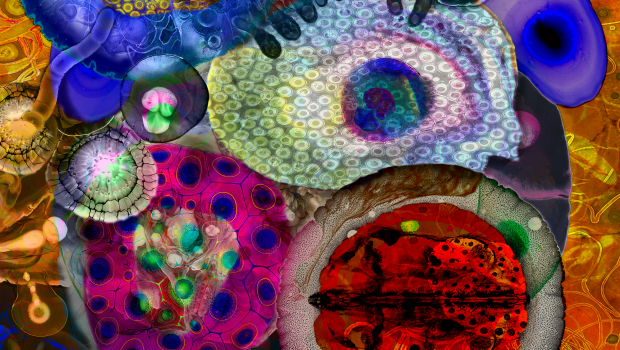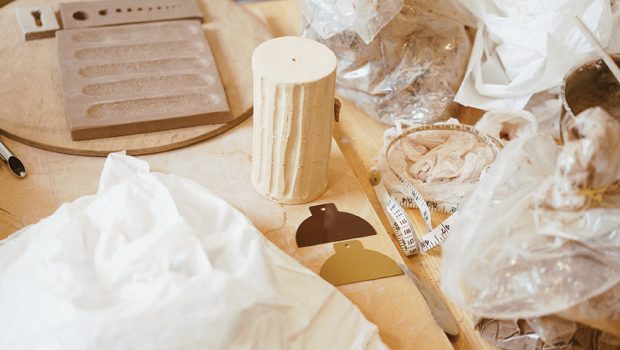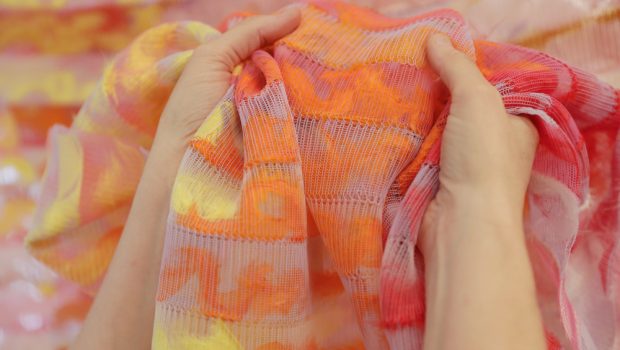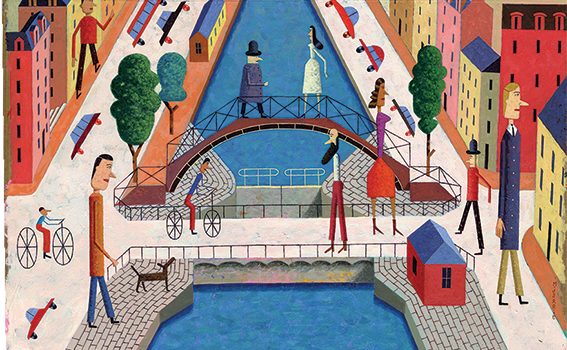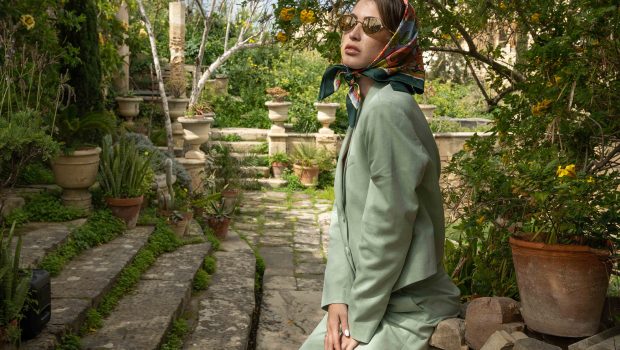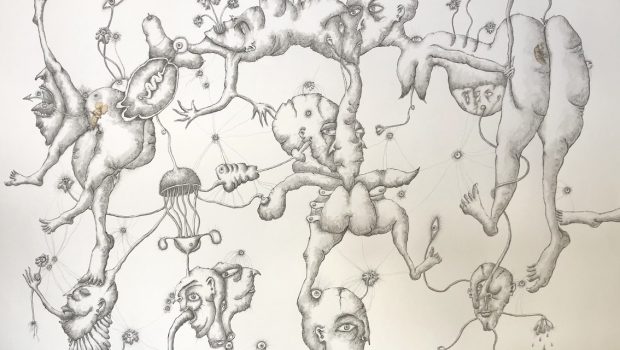Capturing icons
An Interview with Lorenzo Agius, Master of Celebrity Portraiture
Renowned for his cinematic portraits and disarming ability to capture celebrities at their most human, this photographer has worked with some of the biggest names in Hollywood and fashion. From Brad Pitt to Jude Law, his portraits go beyond surface beauty, often becoming the defining images of these public figures. In this exclusive interview, he shares his creative process, the unpredictability of photoshoots, and the unexpected magic that happens when a subject truly lets their guard down.

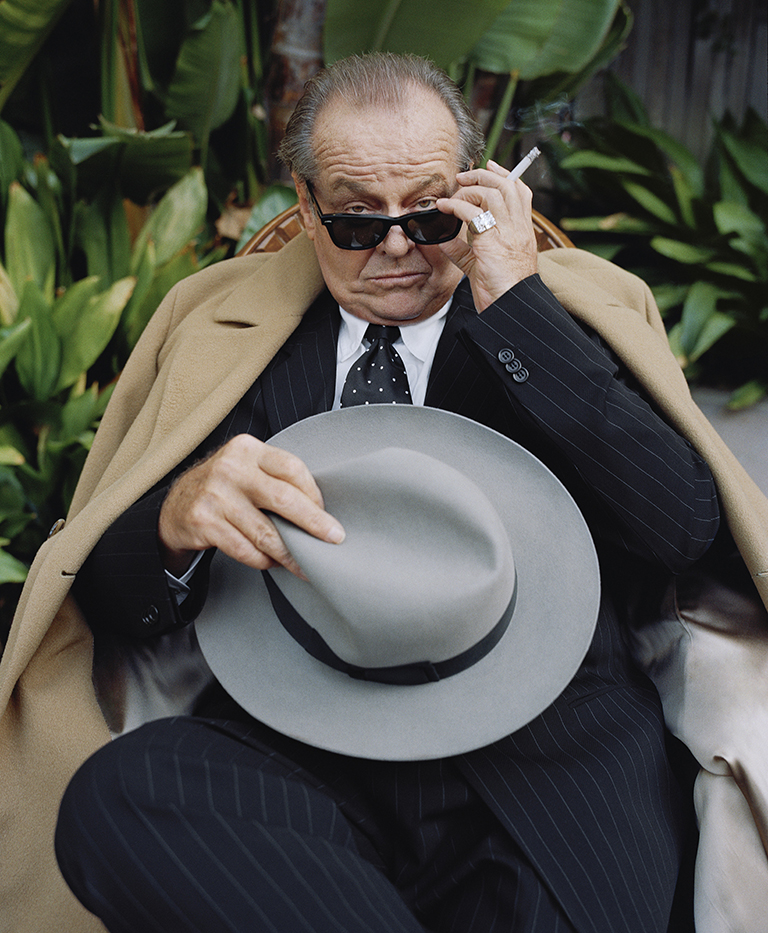
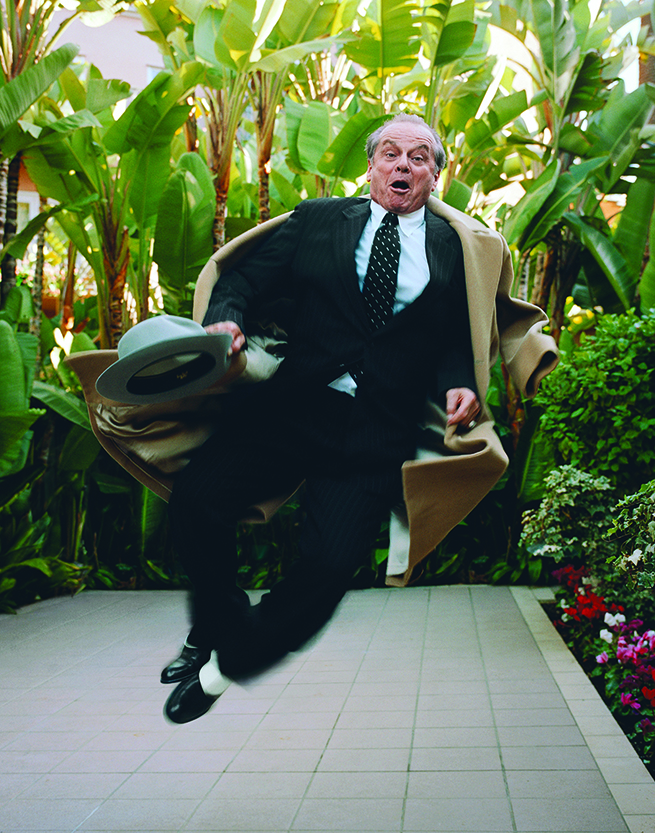
Your celebrity portraits feel really natural and authentic. How do you get famous people to let their guard down when they’re so used to being photographed?
Generally, there’s a lot of conversation prior to the shoot. It’s important to get an understanding of the person in a subtle way and try to make a connection—either personally or by discussing the concept for the shoot. I try to get them on board with my vision. Most of the time, they’re into it. Then during the shoot, I work on going deeper.
What draws you to black and white for some of your portraits? They have this amazing cinematic feel to them.
I love black and white. I’ve always shot it alongside color. These days, it’s easy to convert color into beautiful B&W, but the decision is usually made beforehand. You need to know how you see the final image before you shoot. I used to print black and white photos myself in a darkroom when I was younger—so it’s always been a passion. Most of my favourite images are in black and white.
You’ve worked with magazines like GQ and Vogue for years now. Has your approach changed much over time?
Absolutely. I think all artists evolve as they gain experience and grow older. It’s important to keep learning and pushing yourself.
Some of your photos have become really iconic—like the ones with Ewan McGregor or Jude Law. Do you know when you’re shooting something that might become that memorable?
I usually know when a shoot is going to be special—mainly because of the subject. It’s about recognising the opportunity and doing something beyond just another portrait. It’s like pulling a rabbit out of a hat—surprising people with something unexpected.
I noticed you’ve photographed Brad Pitt several times. What was it like working with him?
I’ve worked with him a few times over the years. He’s such a lovely person, really down to earth, which makes the shoot more fun. He’s also enthusiastic and creative himself, so he understands the process. Most actors do; they know it takes work to get to something good.
Do you prefer working in a controlled studio environment or capturing more spontaneous moments?
I love both. On-location shoots come with the uncertainty and beauty of natural light, which can be magical. But a studio offers control and precision. The key is to adapt and make either setting work in your favour.
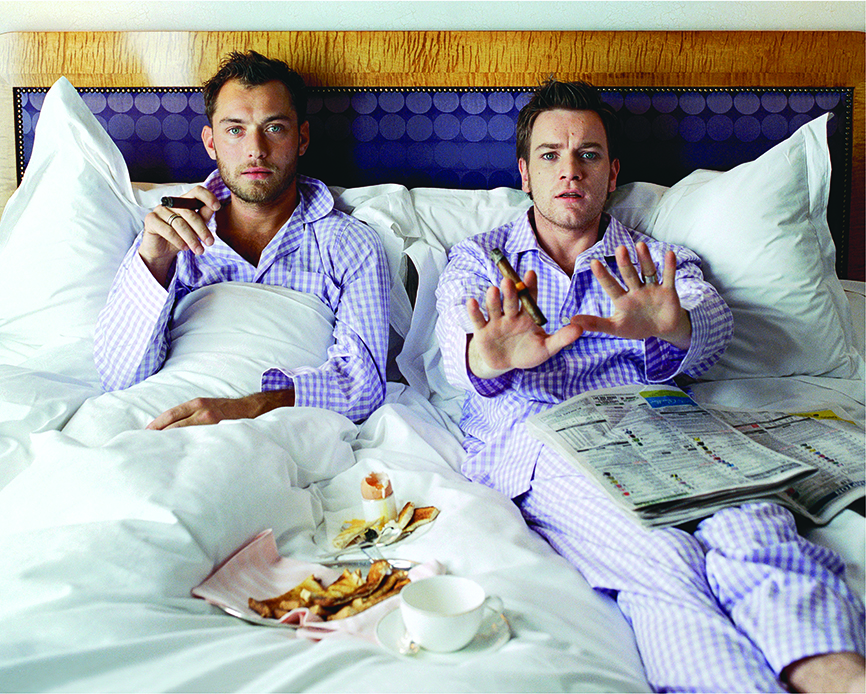
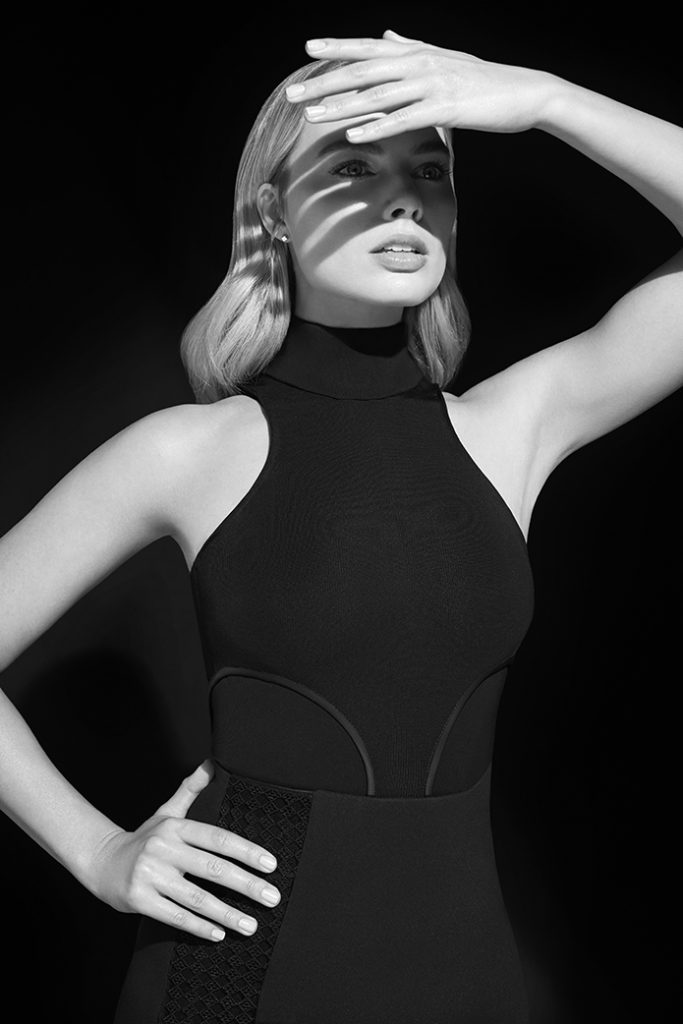
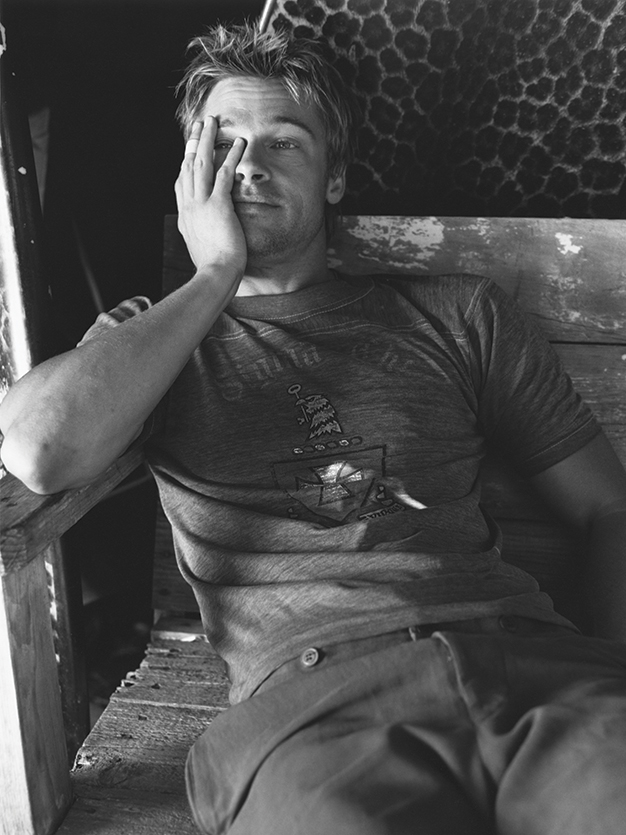
How do you balance having a vision for a shoot while still letting your subject’s personality shine through?
The goal is always to let their personality come through. It’s more of a collaboration—a conversation through images. Sometimes I say something that sparks an idea in the subject, and then we take it in a new direction together. That connection is what I’m looking for.
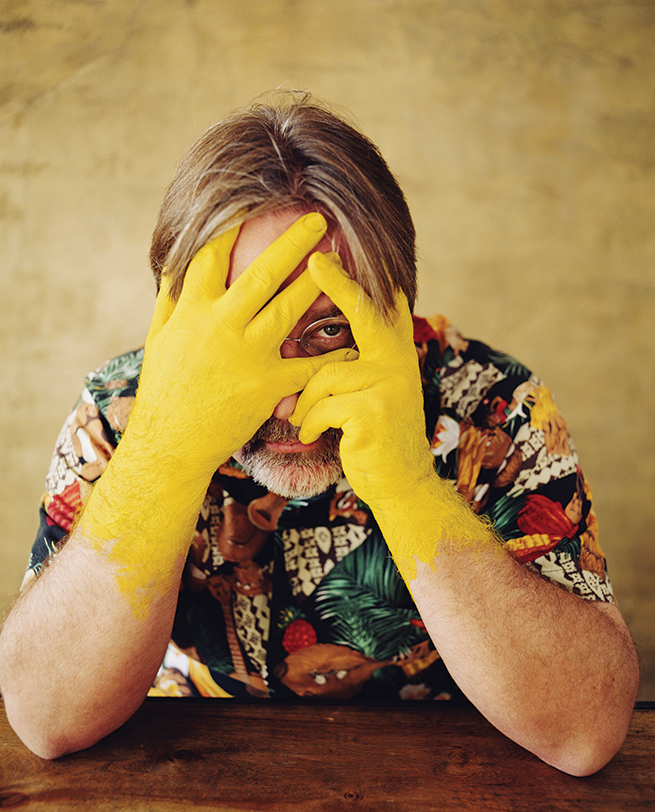
Was there ever a photoshoot that was particularly challenging to pull off? What happened?
Every shoot has its challenges, so it’s essential to align on the idea beforehand. With the Ewan and Jude shoot—in bed, wearing pajamas—I didn’t actually have the concept until an hour before. It went against what the magazine expected. We had to rush to get the wardrobe and then pitch the idea to them. At first, they weren’t sold, but I convinced them it would be funny and unique—not just another portrait. They ended up loving it and really got into character.
Another time, I had a shoot with Matt Groening, the creator of The Simpsons (pg XX). He was sick and didn’t want to do it. I knew I had to get creative fast, so I stopped at a hardware store and bought paint—specifically Bart Simpson yellow. I suggested we keep him anonymous by covering his face with his hands, but showing his glasses. His arms were painted yellow as a playful nod. He loved it. It’s about making the experience enjoyable even for those who hate being photographed. I aim to make shoots witty, fun, and playful. That’s when people let go.
Your work has a distinct look to it. How would you describe your style, and how did you find your photographic voice?
I never really believed I had a particular style. I just try to entertain the viewer or create something iconic and emotionally resonant. I want people to see something in the photo that helps them understand the subject—or even recognise something of themselves.
How has the shift to digital changed the way you work compared to your earlier photography days?
Digital has definitely freed me up—it’s faster and more flexible. But having that foundation in film photography helps. It’s about applying that discipline and knowledge to how I shoot now. Experience is everything. And everything is experience.


